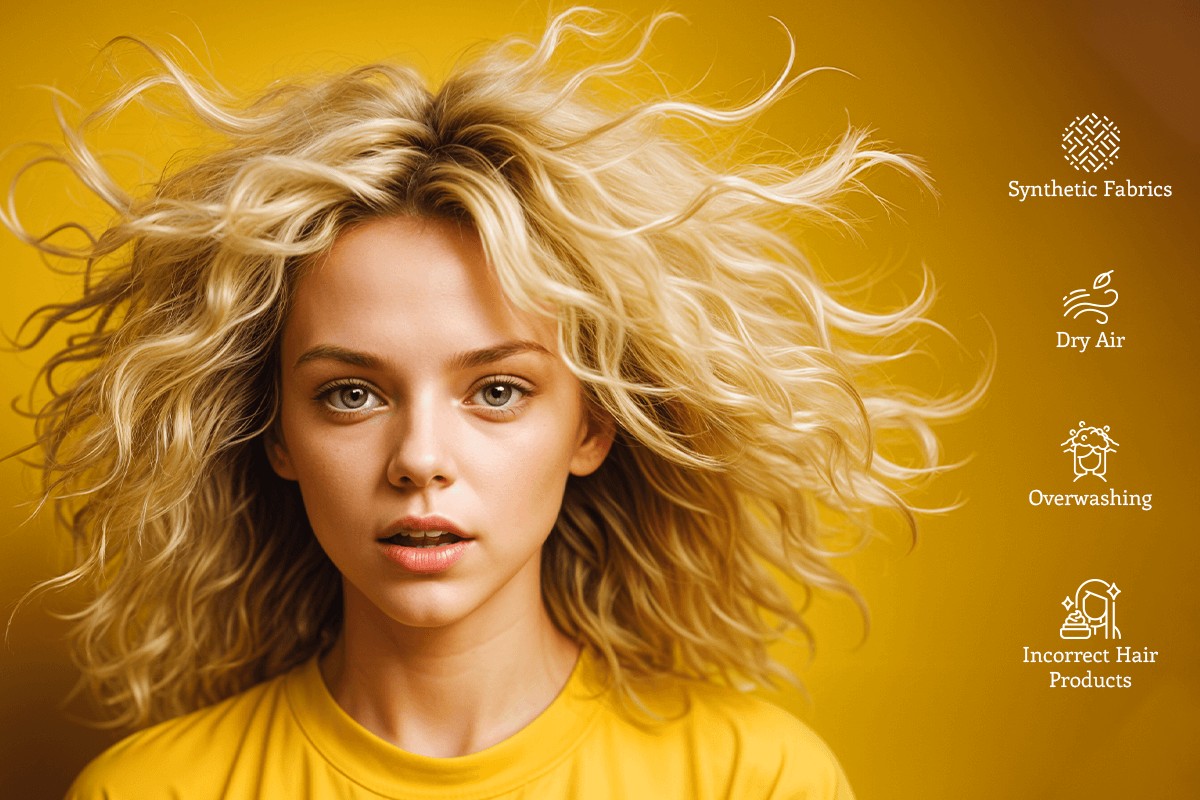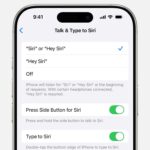Dealing with hair that constantly attracts static can be incredibly annoying, turning a good hair day into a frizzy, unmanageable mess. Especially during drier seasons, static cling becomes a common hair concern. Understanding why your hair becomes staticky and learning effective ways to combat it can revolutionize your hair care routine, leading to smoother, healthier, and more manageable locks. From the dryness of winter air to the clothes we wear, numerous factors contribute to hair static. Here, we will delve into the primary reasons behind static hair and provide expert-backed steps to eliminate static and maintain sleek, beautiful hair.
Decoding Hair Static: The Science Behind the Frizz
Staticky hair is essentially the result of an electrical imbalance. It occurs when your hair accumulates an electrical charge, a phenomenon known as static electricity. This happens when two dissimilar objects rub against each other, causing a transfer of electrons. One object loses electrons and becomes positively charged, while the other gains electrons and becomes negatively charged.
Think about the common experience of “hat hair.” When you wear a hat, the friction between the hat and your hair leads to this electron exchange, generating an electrical charge. In humid environments, this charge usually dissipates quickly due to moisture in the air. However, in dry conditions, like a crisp winter morning, the lack of moisture prevents the charge from neutralizing. This buildup of charge causes hair strands to repel each other, resulting in static and flyaways. Furthermore, dry and damaged hair is inherently more susceptible to static because it lacks the necessary moisture to conduct electricity and neutralize charges.
Essentially, hair static is a sign of an excess of electrons creating an unwelcome charge in your hair. Now that we understand the fundamental cause, let’s explore the specific factors that exacerbate static hair.
Dry Air: The Prime Culprit
Low humidity is a major contributor to static hair. When the air lacks moisture, it actively draws moisture from your hair, leading to dehydration and increased vulnerability to static electricity. This issue is often worsened by indoor heating systems during winter months, which further dry out the air. Investing in a humidifier can significantly improve indoor air quality by restoring moisture. This added humidity helps keep your hair hydrated from the environment, reducing the likelihood of static buildup and maintaining your hair’s natural moisture balance.
Synthetic Fabrics: Friction and Charge Accumulation
The friction generated by synthetic fabrics like polyester and nylon is another significant cause of hair static. These materials are prone to creating static electricity when they come into contact with your hair. The constant rubbing, particularly with clothing or accessories made of synthetic fibers, leads to electron transfer and static charge. Switching to natural fibers such as cotton or silk for your clothing, scarves, and even pillowcases can considerably minimize this friction. Natural fibers are less likely to generate static, helping to keep your hair smooth and static-free throughout the day.
Overwashing: Stripping Natural Oils
Washing your hair too frequently can inadvertently contribute to static. Overwashing strips your scalp and hair of their natural oils, which are crucial for maintaining moisture and preventing dryness. This lack of natural oils leaves your hair dehydrated and more prone to static electricity. To combat this, reduce the frequency of your hair washes. Incorporating a dry shampoo into your hair care routine can help keep your hair feeling fresh and clean between washes, without removing essential oils. This approach helps preserve your hair’s natural moisture balance, reducing dryness and subsequent static.
Heat Styling: Dehydration and Damage
Regular use of heat styling tools such as blow dryers, flat irons, and curling wands can severely dry out your hair, significantly increasing its susceptibility to static. The high temperatures from these tools strip moisture from the hair shaft, leading to dehydration and damage. This dryness makes your hair more vulnerable to static buildup. To minimize heat damage and static, try to limit your use of heat styling tools. When you do use them, always apply a high-quality heat protectant spray beforehand. This creates a barrier that shields your hair from excessive heat, helping to retain moisture and reduce static.
Incorrect Hair Products: Aggravating Dryness
Using hair products that are not suited for your hair type or contain harsh ingredients can worsen hair static. Products formulated with alcohol or other drying agents can strip your hair of its much-needed moisture, making it even more prone to static. Instead, opt for hair products specifically designed to hydrate and nourish your hair. Look for shampoos, conditioners, and styling products that are labeled as moisturizing, hydrating, or anti-static. Ingredients like natural oils, shea butter, and glycerin are beneficial for locking in moisture and keeping static at bay.
5 Expert Tips to Banish Staticky Hair
Now that we’ve explored the common causes of static hair, let’s dive into practical, expert-recommended solutions to eliminate static and achieve smooth, manageable hair.
1: Infuse Moisture with Leave-In Conditioner
Incorporating a leave-in conditioner into your daily hair care routine is a highly effective way to combat static. Leave-in conditioners are designed to provide continuous hydration, locking in moisture and forming a protective layer around each hair strand. This added moisture significantly reduces static and keeps your hair smooth throughout the day. Apply leave-in conditioner to damp hair after washing and conditioning, focusing on the mid-lengths to ends. For optimal results, choose leave-in conditioners enriched with hydrating ingredients such as shea butter, coconut oil, argan oil, and vitamin E. These ingredients deeply nourish and hydrate the hair, further reducing static and improving overall hair health.
2: Hydrate with Moisturizing Shampoos and Conditioners
Switching to moisturizing shampoos and conditioners is fundamental in preventing and combating static hair. These products are formulated to replenish and lock in moisture, addressing the root cause of static. Look for shampoos and conditioners specifically designed for dry or damaged hair, as these are typically richer in moisturizing agents. Ingredients to look for include glycerin, hyaluronic acid, argan oil, shea butter, and ceramides. These components work synergistically to hydrate hair from within, smoothing the hair cuticle and minimizing static. For an extra boost of hydration, consider using a deep conditioning hair mask once or twice a week.
3: Smooth and Protect with Hair Serum
Utilizing an anti-static hair serum is a highly effective strategy for instantly reducing static and maintaining sleek, frizz-free hair. Hair serums work by creating a lightweight, protective barrier around the hair shaft. This barrier minimizes friction between hair strands and external elements, significantly reducing static buildup. Apply a small amount of hair serum to your palms, rub them together, and then gently smooth the serum through your hair, focusing on the ends and areas prone to frizz and static. Apply serum to dry or slightly damp hair before styling to ensure a polished, static-free finish. For enhanced benefits, choose serums enriched with hydrating ingredients like jojoba oil, silk proteins, ceramides, and essential fatty acids. These ingredients not only combat static but also nourish and improve the overall health and appearance of your hair.
4: Embrace Natural Fabrics
Your clothing choices play a significant role in hair static. Opting for clothing and accessories made from natural fibers, such as cotton, silk, wool, and bamboo, can drastically reduce static compared to synthetic fabrics. Natural fibers generate less friction and are less likely to cause static buildup in your hair. Whenever possible, choose natural fiber alternatives for your clothing, hats, scarves, and pillowcases. Silk pillowcases, in particular, are highly recommended as they minimize friction on your hair while you sleep, reducing static and preventing hair breakage.
5: Minimize Heat Styling Frequency
Reducing the frequency of heat styling is crucial for minimizing hair static. As discussed earlier, heat styling tools dehydrate the hair, making it more prone to static. Try to embrace air-drying your hair whenever possible to reduce heat exposure. Experiment with heatless styling methods like braids, buns, or twists to achieve various hairstyles without relying on heat. If you must use heat styling tools, lower the heat setting and always use a heat protectant spray. Consider using heatless styling alternatives for everyday looks and reserve heat styling for special occasions to maintain your hair’s moisture and minimize static.
Conclusion: Achieving Static-Free Hair
Effectively managing hair static requires a comprehensive approach that addresses its root causes and implements consistent preventative measures. By focusing on increasing humidity levels in your environment, incorporating deeply moisturizing hair masks and leave-in conditioners into your routine, regularly applying hair serums, choosing natural fabrics for clothing and accessories, and minimizing heat styling, you can dramatically reduce static and enjoy smoother, healthier hair. These steps not only prevent static buildup but also contribute to the overall health and appearance of your hair, making it more resilient and beautiful.
For targeted solutions to combat hair static and elevate your hair care routine, explore GK Hair’s extensive range of best hair products. Our collection includes specialized hair serums, deeply hydrating shampoos and conditioners, and leave-in treatments, all designed to nourish your hair and eliminate static. Visit our website today to discover how GK Hair products can help you achieve your hair goals and maintain beautifully static-free hair, every day.
To ensure your hair stays in optimal condition, remember that regular maintenance of your hair tools is also essential. Learn how to clean your hair brush the right way to prevent product buildup and keep your brushes clean and effective, further contributing to the health and vibrancy of your locks.
FAQs About Staticky Hair
FAQ 1: What are the primary reasons my hair becomes staticky?
Hair static is primarily caused by low humidity levels, which lead to moisture loss in your hair. This dryness makes hair more susceptible to static electricity. Other contributing factors include wearing synthetic fabrics, overwashing your hair, and using hair products that contain alcohol or harsh chemicals, all of which can further dry out your hair and increase static.
FAQ 2: How can I effectively prevent static in my hair during the winter months?
Static hair is particularly prevalent in winter due to the dry indoor air caused by heating systems. To prevent static during winter, consider using a humidifier to add moisture to your indoor air. Regularly apply a moisturizing leave-in conditioner to keep your hair hydrated. Use anti-static sprays or hair serums before styling to minimize static. When outdoors, opt for hats and scarves made from natural fibers like cotton or wool to reduce friction and static buildup.
FAQ 3: Is it true that heat styling tools can contribute to increased hair static?
Yes, frequent use of heat styling tools such as blow dryers, flat irons, and curling irons is a significant contributor to hair static. The high heat from these tools strips moisture from your hair strands, making them dry, brittle, and more susceptible to static electricity. Limiting heat styling and always using a heat protectant spray are crucial steps in minimizing heat-induced static and maintaining hair health.

